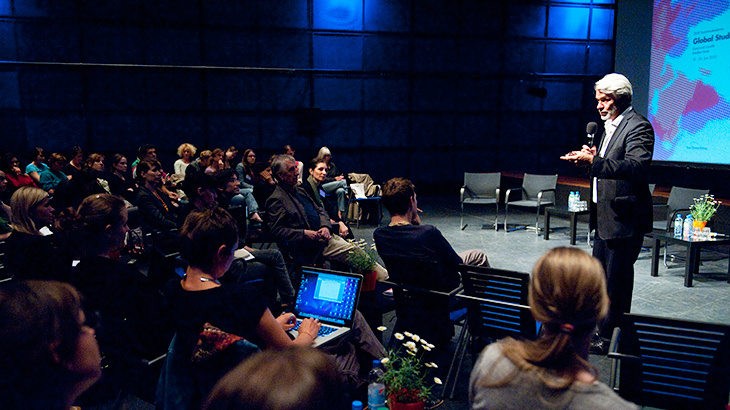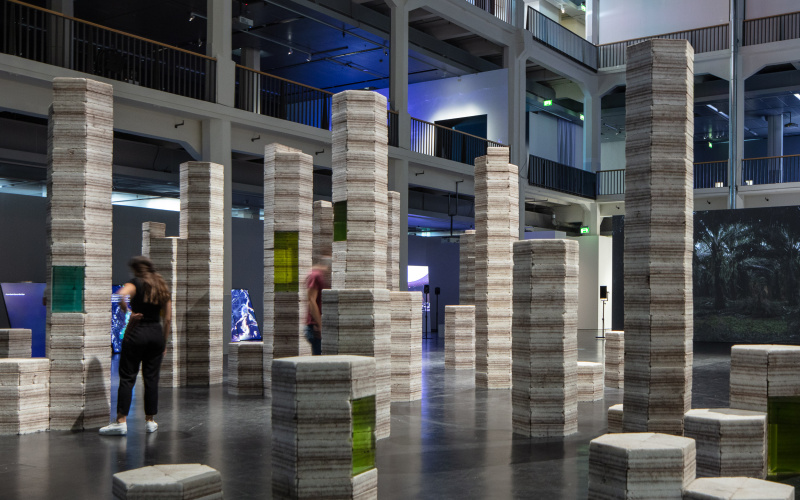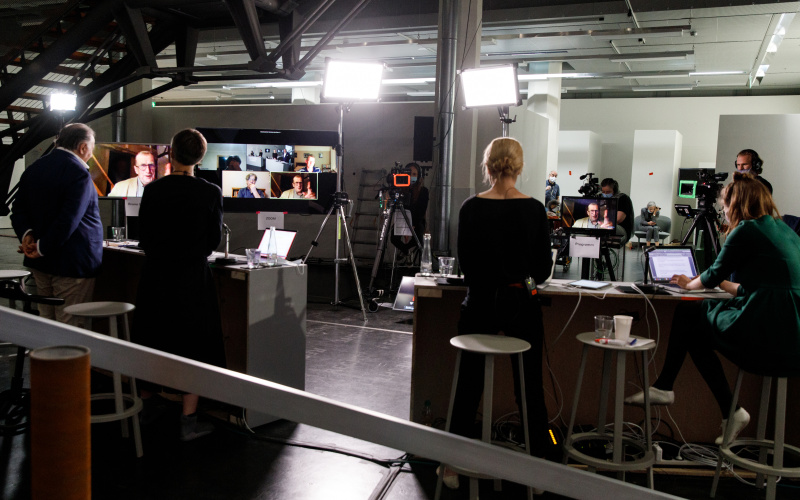GAM – Global Art and the Museum
The term globalization has now become a catchword on everyone’s lips. The question as to its impact on contemporary art and institutions, however, still remains unaccounted for. It was with this in view that Peter Weibel and Hans Belting initiated the project GAM – Global Art and the Museum at the ZKM, in 2006; the aim was to launch an examination of a process which brought about the transformation of art production, extended to a global level, as well as the transformation of art museums. The aim was to awaken a consciousness of this transformation which globalization signified for the emergence of new art worlds. The point of departure for this investigation was the art museum in its previous manifestation as MOCA (Museum of Contemporary Art) that had experienced a founding boom, while the biennales spread a new network of art forms around the globe. Whereas, for the most part, museum theory which analyses all types of museum has still remained within a western context, GAM by contrast, focused its attention on the new museum practices, which have been emerging over the last two decades beyond “Euramerica” (John Clark). Two international conferences in 2006 and 2007 brought together the representatives of museums; the theme was the challenges to the art museum in the age of globalization. This was followed by a series of workshops in collaboration with the Goethe Institute, which took place in Sao Paulo, New Delhi and Hong Kong, and which discussed the GAM project in a locally different context. In Brazil the global turn in contemporary art collections was discussed, in India, the role of art history, and in Hong Kong the emergence of new regions of art. The issue was subsequently deepened at the ZKM by way of a grant program sponsored by the Fritz-Thyssen Foundation. The program began with a ten-day seminar in which scholarship holders from a total of ten countries discussed their experiences with the status of the museum landscape, and the transformation of art practice. The program was continued under the heading “Global Studies”: here, conferences were held at which young scholars and researchers from German-speaking countries presented their research projects in which very similar phenomena found in contemporary art were examined from different specialist perspectives. The activities and results of GAM have been published on its website (www.globalartmuseum.de) in various columns since 2008; these provide a forum for invited authors as well as presenting the museum of the month. Meanwhile, in addition to the Website, three English language publications are available at Hatje Cantz Verlag. The first volume was edited by Peter Weibel and Andrea Buddensieg in 2007, under the title Contemporary Art and the Museum. A Global Perspective, while the second volume was edited by Hans Belting and Andrea Buddensieg in 2009, under the title The Global Art World. Audiences, Markets and Museums. The third volume appeared in 2011 under the title Global Studies. Mapping Contemporary Art and Culture, edited by Hans Belting, Jacob Birken, Andrea Buddensieg and Peter Weibel. The exhibition The Global Contemporary. Art Worlds After 1989 (2011/12) represented a first assessment of GAM. The related theme night entitled The Global Contemporary and the Rise of New Art Worlds was presented in January 2013 as The MIT Press publication, whereas, the Karlsruhe exhibition was concurrently opened in Berlin, at the Academy of Arts in a different format and under the title Nothing to Declare?.
Text: Andrea Buddensieg
Photo: ZKM Global Studies, "Art and Visual Media Today," June 18-20, 2010, Chris Dercon giving a lecture
Category
News Category
- latest discoveries



